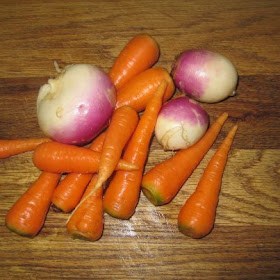Here’s Master Gardener Jill Hudock on ‘Ascot Rainbow’ Spurge.
 |
Euphorbia x martinii ‘Ascot Rainbow’
in Jill's Shippensburg Landscape |
If you’re looking for an all-seasons perennial with pizzazz, check out
Euphorbia x martinii ‘Ascot Rainbow’. The name certainly has flair. The common name for the genus Euphorbia is spurge. Still, it’s quite a moniker. However, this plant does deserve something special.
Discovered in 2005 growing in an Ascot, Victoria Australia nursery and receiving its US Patent in 2010, it’s been propagated, marketed and distributed widely enough to reach south central PA in two years. With that kind of push, you know it has to be good.
I bought 4 of them two years ago. And while they haven’t all fared the same, they are all still alive. The happiest one received a dollop of compost last year and is a whopping 30” tall by 4’ round mound of variegated foliage. Plus, nothing seems to bother this plant. Not the bunnies, insects or weather. ‘Ascot Rainbow’ is just as stunning in the depths of winter as in the freshness of spring.
 |
Euphorbia x martinii ‘Ascot Rainbow’
in Spring Bloom |
Narrow, 3 inch-long variegated leaves cover stalks with cream, lime and grey-green. In spring the flowers (technically they are bracts) emerge bright lime then change to vibrant yellow, tinged with red. The bracts color-echo the leaves nicely, blooming on both old and new wood. They hover above the stalk much like an airy ‘Autumn Joy’ Sedum and are suitable for cut flowers.
Just make sure you wear gloves, as the sap can be a skin and eye irritant. All parts are poisonous if ingested. Maybe that’s why the bunnies and groundhogs seem to steer clear. ‘Ascot Rainbow’ could be used as protective border, keeping those critters from munching on something they do find appetizing.
 |
| Euphorbia x martinii ‘Ascot Rainbow’ |
In summer the leaves always look fresh and full…healthy. The bracts maintain their appeal. Honestly, it’s almost as if this plant is artificial!
In fall the colors become muted shades of red, pink and orange. It looks great with mums, ornamental grasses and pumpkins.
In winter the leaves may droop with a frost or an ice coating but will recover very quickly to look as if nothing ever happened. I constantly marvel at its vitality. Most euphorbias hold up well throughout our area but none that I’ve seen even come close to the lasting beauty of this one. And while it’s not an all-over green shade, it is considered an evergreen perennial due to its consistent appearance.
‘Ascot Rainbow’ spurge can be found in zones 5-9, growing happily in full sun to part shade, well-drained soil with moderate watering. Once established, it will handle drought conditions easily, like most euphorbias. Last year’s flower stalks can be cut back in early spring to encourage new, long-lasting blooms.
This plant deserves to be seen in full color. It’s an easy partner in the garden. The variegated leaves play nicely with most plants and are especially attractive when viewed in front of a dark green evergreen. Try it in a container with annuals for non-stop drama. I really can’t think of a bad combination, other than placing it beside another variegated plant with the same color proportions.
Euphorbia x martinii ‘Ascot Rainbow’ will lighten up your garden all year round. So if you’re looking to bring a bit of excitement, go ahead, splurge on this spurge!
More pictures can be found at
Plant Delights Nursery. It was chosen as
"Plant of the Week" by the University of Maryland's
Ginny Rosencrantz in April, 2012.




















.JPG)
































